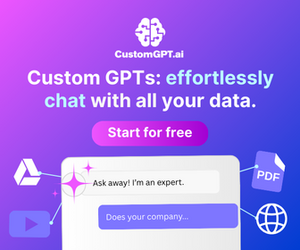-
Table of Contents
- AI Digital Product Side Hustle: A Path to Financial Freedom
- Why Choose an AI-Driven Side Hustle?
- Identifying Your Niche
- Case Study: AI-Powered Language Learning App
- Creating Your Digital Product
- Example: AI-Generated E-Books
- Marketing Your AI Digital Product
- Case Study: AI-Driven Marketing Campaign
- Monetizing Your AI Digital Product
- Example: AI-Powered SaaS
- Scaling Your Side Hustle
- Case Study: Scaling with AI
- Common Challenges and How to Overcome Them
AI Digital Product Side Hustle: A Path to Financial Freedom

AI digital product side hustle has emerged as a lucrative opportunity for individuals looking to diversify their income streams. With the rapid advancements in artificial intelligence, creating and selling digital products has never been easier. Whether you’re a tech enthusiast or a complete beginner, this guide will walk you through the steps to build a successful side hustle using AI-driven tools and strategies.
Why Choose an AI-Driven Side Hustle?
Artificial intelligence has revolutionized the way we create and market digital products. Unlike traditional methods, AI allows you to automate repetitive tasks, analyze data efficiently, and personalize customer experiences. This not only saves time but also increases the chances of success. Moreover, the demand for AI-powered solutions is growing exponentially, making it a profitable niche to explore.
- Automation: AI tools can handle tasks like content creation, customer support, and data analysis, freeing up your time.
- Scalability: Digital products can be sold to a global audience without the need for physical inventory.
- Low Startup Costs: Many AI tools are affordable or even free, making it easy to get started with minimal investment.
Identifying Your Niche
Choosing the right niche is crucial for the success of your AI digital product side hustle. Start by identifying your strengths and interests. Are you good at graphic design, writing, or coding? Next, research market trends to find out what products are in demand. Tools like Google Trends and social media platforms can provide valuable insights.
For example, if you’re passionate about fitness, you could create an AI-powered workout planner. Alternatively, if you have a knack for writing, consider developing an AI-based content generator. The key is to find a niche that aligns with your skills and has a growing market.
Case Study: AI-Powered Language Learning App
One successful example is Duolingo, which uses AI to personalize language learning experiences. By analyzing user data, the app adapts lessons to individual learning styles, making it more effective. This approach has helped Duolingo attract millions of users and generate significant revenue.
Creating Your Digital Product
Once you’ve identified your niche, the next step is to create your digital product. AI tools can assist you in various stages of product development, from ideation to execution. For instance, you can use AI-powered design tools like Canva to create visually appealing graphics or platforms like ChatGPT to generate content.
- Content Creation: Use AI tools to write blog posts, create videos, or design infographics.
- Product Development: Leverage AI to build apps, software, or other digital solutions.
- Quality Assurance: Utilize AI for testing and debugging to ensure your product is error-free.
Example: AI-Generated E-Books
Many entrepreneurs are using AI to create e-books on various topics. Tools like Jasper AI can help you write high-quality content in a fraction of the time. Once the e-book is ready, you can sell it on platforms like Amazon Kindle or your own website.
Marketing Your AI Digital Product
Creating a great product is only half the battle; you also need to market it effectively. AI can play a significant role in your marketing strategy by helping you target the right audience and optimize your campaigns. For example, you can use AI-driven analytics tools to track user behavior and adjust your marketing efforts accordingly.
- Social Media Marketing: Use AI tools to schedule posts, analyze engagement, and target specific demographics.
- Email Marketing: Leverage AI to personalize email campaigns and improve open rates.
- SEO Optimization: Utilize AI to identify keywords and optimize your content for search engines.
Case Study: AI-Driven Marketing Campaign
HubSpot, a leading marketing platform, uses AI to enhance its marketing efforts. By analyzing customer data, HubSpot can create personalized email campaigns that result in higher engagement and conversion rates. This approach has helped the company grow its customer base significantly.
Monetizing Your AI Digital Product
There are several ways to monetize your AI digital product side hustle. You can sell your product directly to consumers, offer subscription-based services, or even license your product to other businesses. Additionally, you can explore affiliate marketing or partnerships to generate additional revenue streams.
- Direct Sales: Sell your product on platforms like Etsy, Amazon, or your own website.
- Subscriptions: Offer monthly or yearly subscriptions for access to premium features.
- Licensing: License your product to other businesses for a recurring fee.
Example: AI-Powered SaaS
Software as a Service (SaaS) is a popular model for monetizing AI digital products. Companies like Grammarly offer AI-powered writing assistance through a subscription model, generating consistent revenue while providing value to users.
Scaling Your Side Hustle
Once your AI digital product side hustle is up and running, the next step is to scale it. This involves expanding your product line, reaching new markets, and optimizing your operations. AI can help you achieve this by automating tasks, analyzing data, and providing insights into customer behavior.
- Product Expansion: Develop new products or features to attract a broader audience.
- Market Expansion: Explore international markets or new demographics to increase your customer base.
- Operational Efficiency: Use AI to streamline processes and reduce costs.
Case Study: Scaling with AI
Netflix is a prime example of scaling with AI. The company uses AI algorithms to recommend content to users, analyze viewing patterns, and optimize its content library. This has helped Netflix grow its subscriber base and maintain a competitive edge in the streaming industry.
Common Challenges and How to Overcome Them
While an AI digital product side hustle offers numerous benefits, it also comes with its own set of challenges. These include technical difficulties, market competition, and customer acquisition. However, with the right strategies, you can overcome these obstacles and achieve success.
- Technical Challenges: Invest in learning new skills or hire experts to handle complex tasks.
- Competition: Differentiate your product by


Leave a Reply